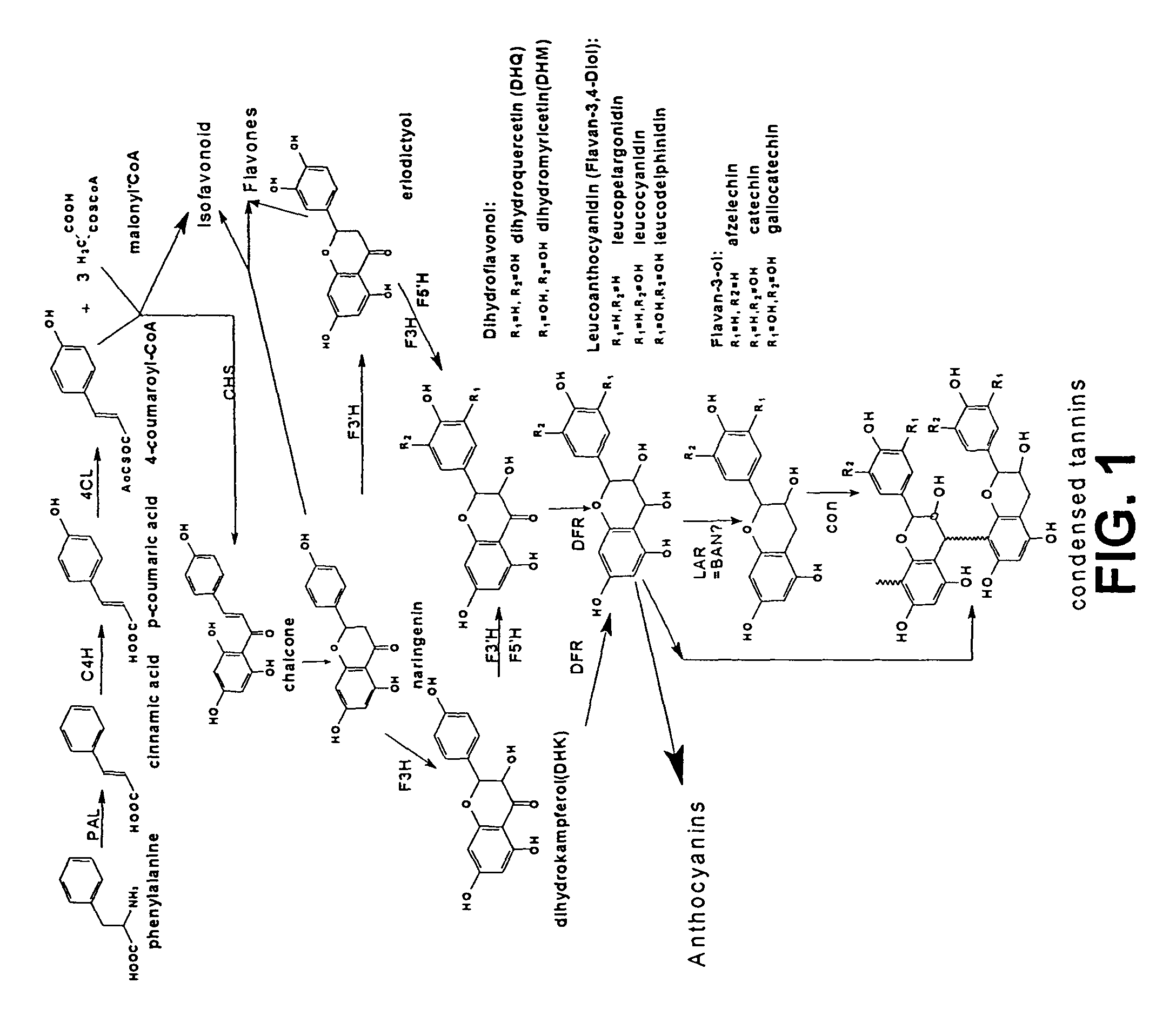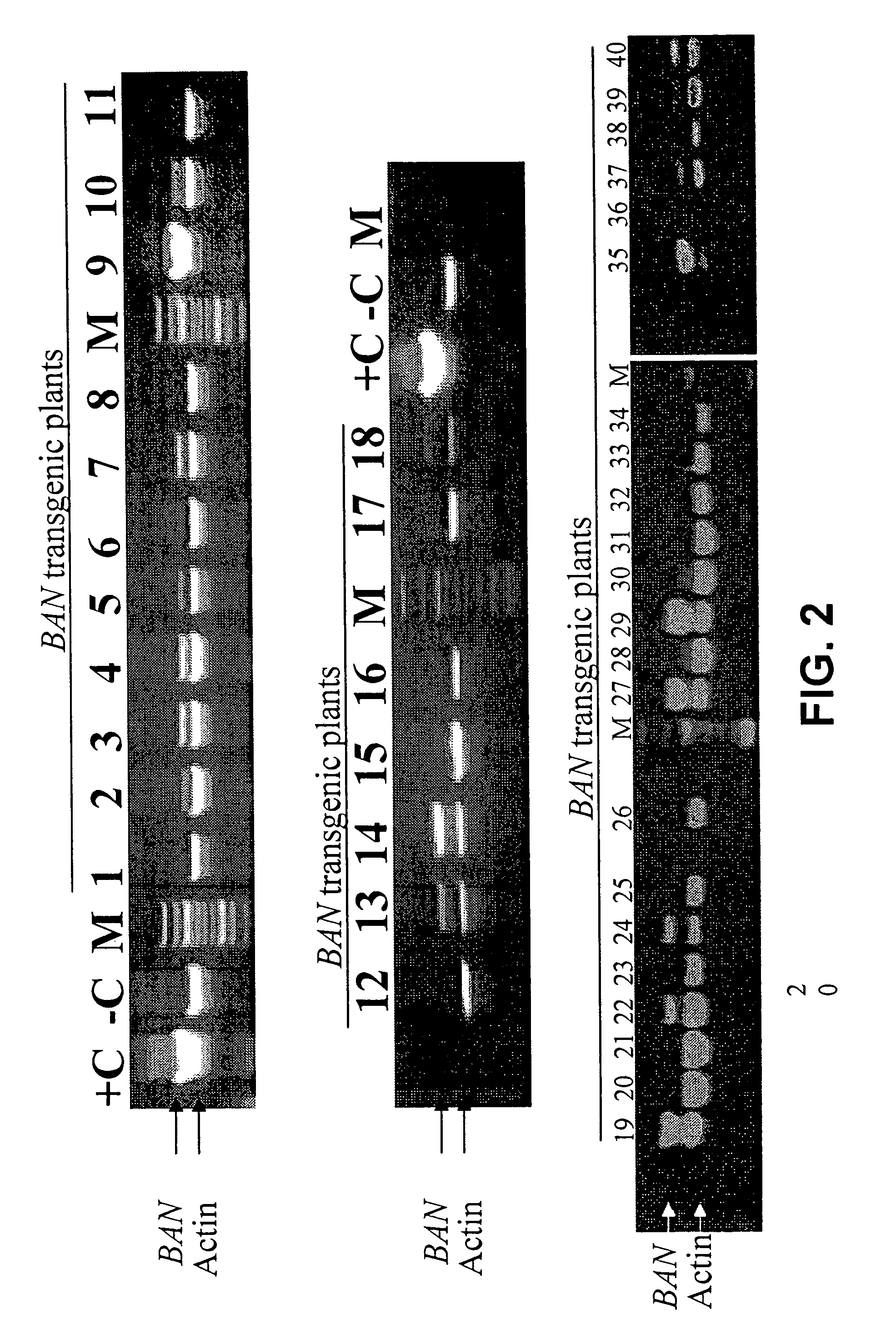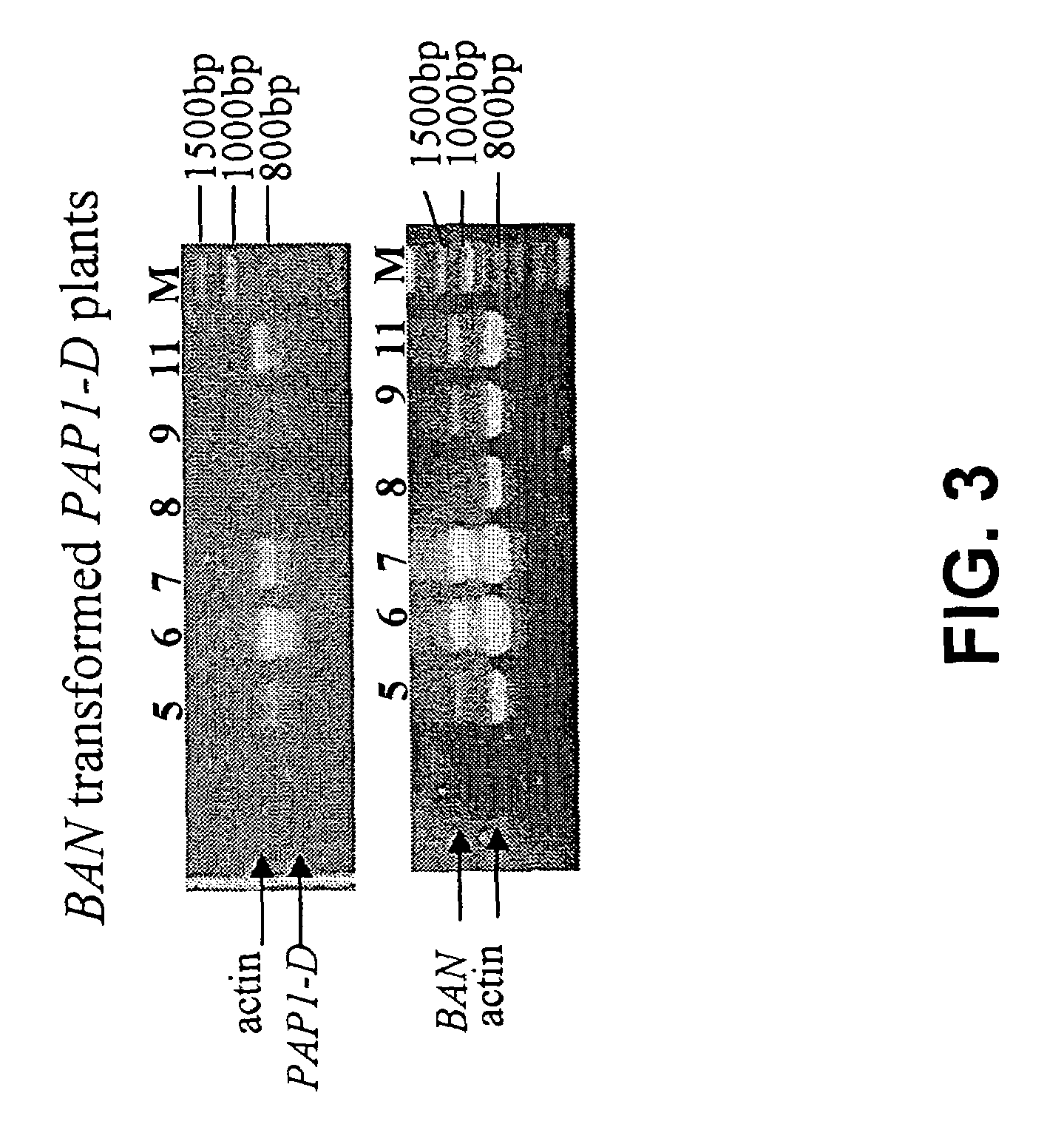Genetic manipulation of condensed tannins
a technology of condensed tannins and gene manipulation, applied in the field of plant genetics, can solve the problems of inability to provide the technology for applying this understanding in the early art, and achieve the effect of high stringency conditions
- Summary
- Abstract
- Description
- Claims
- Application Information
AI Technical Summary
Benefits of technology
Problems solved by technology
Method used
Image
Examples
example 1
Production of CT in Leaves of Arabidopsis thaliana by Constitutive Expression of the Arabidopsis BAN Gene
[0179]Arabidopsis thaliana ecotype Colombia (Col-0) and genetically transformed Col-0 plants were grown at 22° C. in long days (16 hr light, 250 μE light intensity). For cloning of the Arabidopsis BAN coding region, 4 μg of total RNA isolated from the first three to four newly emerged siliques was used to synthesize first strand cDNA in a volume of 20 μl containing 20 mM Tris-HCl pH 8.4, 50 mM KCl2, 5 mM MgCl2, 10 mM DDT, 1 mM deoxyribonucleotide triphosphate mixture, 500 ng oligo (dT)12-18 (GibcoBRL), 25 units of RNA Out (Gibco BRL) and 200 units of Moloney murine leukemia virus reverse transcriptase SuperScriptII (Gibco BRL) for 60 min at 42° C. Four μl of the first strand solution was used for PCR reactions using gene specific primers BAN: forward primer GGGCCCATGGACCAGACTCTTACACAC (SEQ ID NO:7); reverse primer CCCAGATCTAGAATGAGACCAAAGACT (SEQ ID NO:8) and high fidelity Pfu po...
example 2
Expression of the BAN Gene Reduces Anthocyanin Levels in the PAP-1D Mutant of Arabidopsis
[0187]The PAP-1 gene of Arabidopsis encodes a MYB transcription factor (Borevitz et al., 2000). Over-expression of PAP-1 leads to strong constitutive induction of the complete pathway leading to anthocyanins in Arabidopsis. The pap-1 D mutant of Arabidopsis over-expresses PAP-1 by virtue of the insertion of a T-DNA activation tag close to the 5′-end of the PAP-1 gene, and ectopically accumulates anthocyanins throughout the plant, resulting in a strong purple coloration (Borevitz et al., 2000).
[0188]The PAP1-D mutant was transformed with Agrobacterium harboring the full length Arabidopsis ban cDNA under control of a double 35S promoter (p2xS35::BAN) using the floral dip method (Clough and Bent, 1999). Most of the 2xS35::BAN transformed PAP1-D plants lost the purple anthocyanin pigmentation in their leaves. Some of these plants were analyzed for expression of PAP, BAN and actin genes by RT-PCR. (...
example 3
Cloning of a BAN gene from the forage legume Medicago truncatula
[0189]Unvemalized seeds of Medicago truncatula cv Jemalong line A-17 were planted in pots and seedlings grown in the greenhouse. After pollination of flowers, young seed pods were collected and young seeds about 2-5 mm in size were removed from the pods, dropped in liquid nitrogen, and stored at −80° C. Total RNA was extracted from young seeds using a Qiagen Midi kit RNA isolation kit, and mRNA obtained from the total RNA using a poly(A) mRNA purification kit (Qiagen). A cDNA library was constructed from the mRNA using a Stratagene ZAP-cDNA synthesis kit and ZAP-cDNA Gigapack III Gold cloning kit, according to the manufacturer's protocols. Mass excision of the cDNA library was performed using 1 μl primary cDNA library (about 10, 000 pfu of phage) following the protocol of the Stratagene kit. One μl of mass excised plasmids was used for plating with E. coli SoLR cells following the protocols in the Stratagene kit. Five ...
PUM
| Property | Measurement | Unit |
|---|---|---|
| fresh weight | aaaaa | aaaaa |
| temperature | aaaaa | aaaaa |
| length | aaaaa | aaaaa |
Abstract
Description
Claims
Application Information
 Login to View More
Login to View More - R&D
- Intellectual Property
- Life Sciences
- Materials
- Tech Scout
- Unparalleled Data Quality
- Higher Quality Content
- 60% Fewer Hallucinations
Browse by: Latest US Patents, China's latest patents, Technical Efficacy Thesaurus, Application Domain, Technology Topic, Popular Technical Reports.
© 2025 PatSnap. All rights reserved.Legal|Privacy policy|Modern Slavery Act Transparency Statement|Sitemap|About US| Contact US: help@patsnap.com



